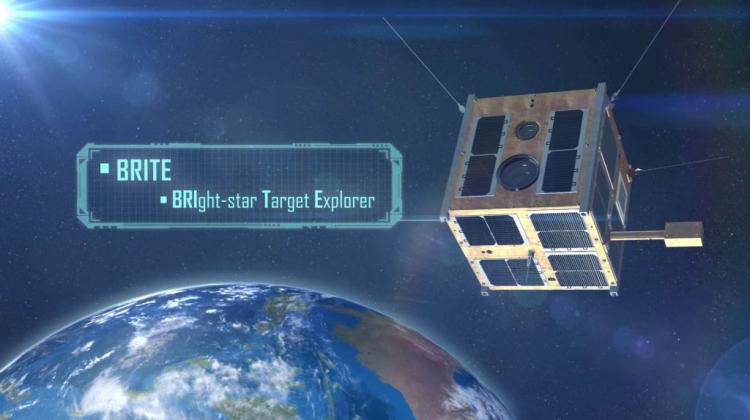Launch of the Polish satellite Hevelius few months delayed

Launch of Hevelius, the second Polish scientific satellite, will be few months delayed. The cause is the malfunction of the Chinese rocket, which was to carry it into space. Polish scientists estimate that the earliest Hevelius will be in space is the first quarter of 2014.
Hevelius was supposed to launch on Dec. 30 on Chinese Long March 4B rocket. "This was the first time that Chinese rocket of this type malfunctioned. Brazilian satellite carried by the rocket landed in Antarctica instead of space. But, generally speaking, it happens" - told PAP Prof. Aleksander Schwarzenberg-Czerny from the Nicolaus Copernicus Astronomical Center in Warsaw.
He explained that rockets manufacturers very thoroughly analyze any such event to avoid repeating the same mistake. "Now the Chinese, who already have a lot of experience in launching rockets, are analyzing the data sent by the rocket. Study of the causes of such event could take at least three months" - described Prof. Schwarzenberg-Czerny.
Hevelius and Lem are Polish scientific satellites built int the international project BRIght Target Explorer Constellation - BRITE. The group of satellites also includes the two Austrian and Canadian objects.
The delayed launch of Hevelius will not adversely affect the work of Lem, which is already in space. "Technically, Brite satellites do not have to work together. Lem can collect scientific data without Hevelius" - said Prof. Schwarzenberg-Czerny.
Placed in orbit at an altitude of about 800 km, for a few years the satellites will carry out precise measurements of the brightest stars in the sky, that can be seen even with the naked eye at night. "The brightest stars are neglected by more complex satellites. Brite satellites are fitted with wide-angle cameras that sees the dozens of bright stars at once" - explained Prof. Schwarzenberg-Czerny.
Because of the blurring effects of the Earth\'s atmosphere, small changes in brightness can not be seen from Earth even through the largest telescopes. This is why telescopes have been placed in orbit. From there, you can perform observations of changes in the brightness of stars, which are caused by stars’ own vibrations, so-called oscillations.
This way, scientists can obtain information about the internal structure of stars and the details of their internal physical processes, such as thermonuclear reactions, mixing of matter, energy transport from the centre to the surface by convection, and radiation.
Lem satellite, which was launched in November, is now in the so-called approval phase. "You can say that it is healthy, but it went to the medical center for an examination. For each satellite a launch is a serious experience and requires testing its health. We are already halfway through these tests" - described the professor.
According to estimates, within two months from the launch, in late January, Lem should begin to collect scientific data.
The scientist believes that the successful launch of Lem and the expected launch of Hevelius does not mean that Poland will launch military or telecommunications satellites anytime soon. "Our satellites are the size of a shoebox. Large communication satellite is the size of a bus, weighs 10 tons, and the cost can reach one billion dollars. One of these satellites can cost as much as the entire budget of Polish science. It\'s a different class of issues" - he emphasised.
Polish scientific satellites have been developed by experts from the Space Research Centre PAS and the Nicolaus Copernicus Astronomical Center. Ministry of Science and Higher Education allocated more than PLN 14 million to their construction.
Ewelina Krajczyńska (PAP)
ekr/ agt/
tr. RL
Przed dodaniem komentarza prosimy o zapoznanie z Regulaminem forum serwisu Nauka w Polsce.


















